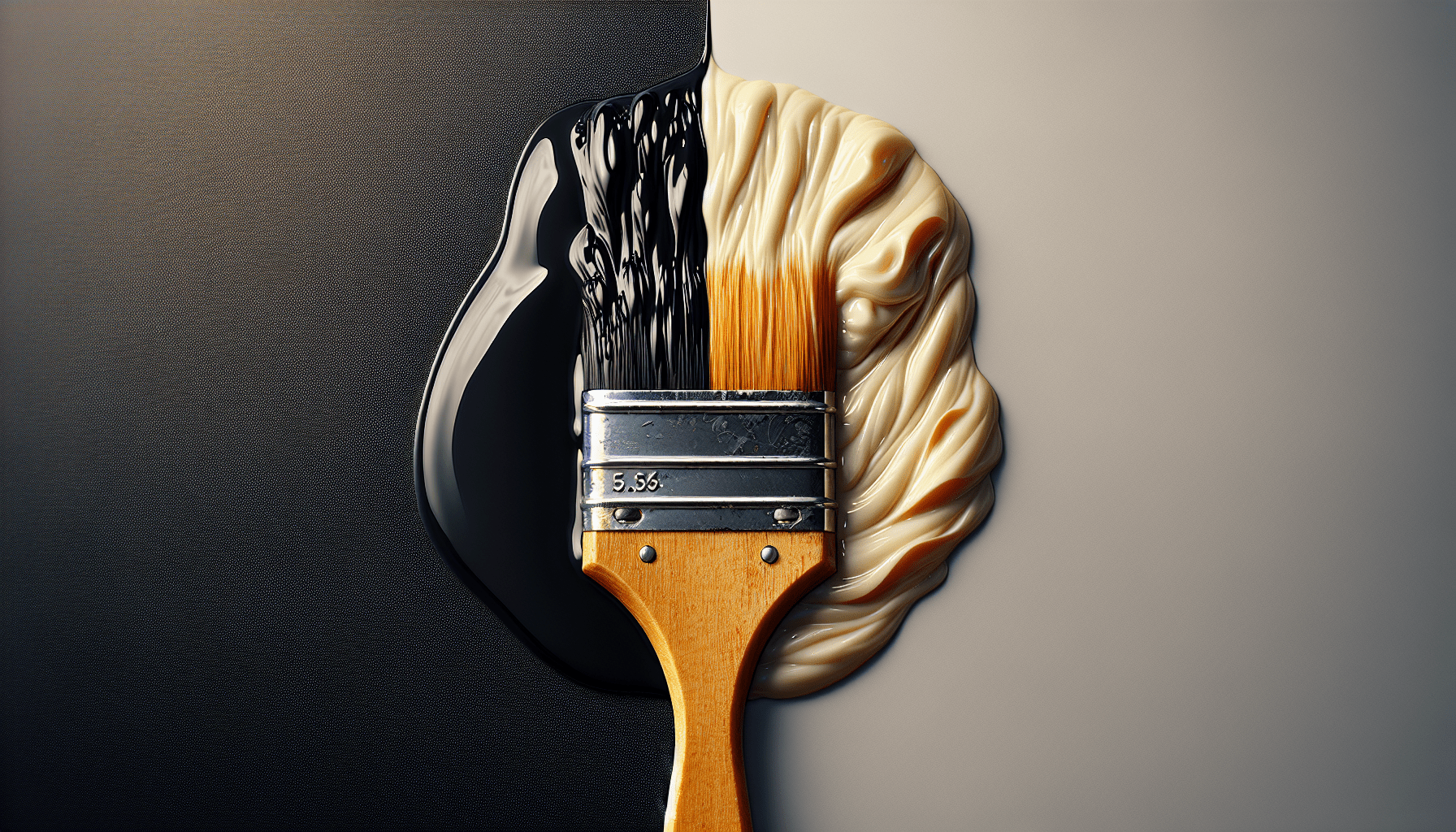When it comes to painting a latex mask, the choice of paint can make all the difference in achieving a realistic and durable finish. Selecting the right paint for your latex mask can enhance its visual appeal and ensure its longevity. In this article, you will discover the best types of paint to use on a latex mask, as well as important considerations to keep in mind during the painting process. By understanding the characteristics of different paints, you will be able to make an informed decision and create a stunning masterpiece.
Understanding the Nature of Latex Masks
Latex masks are a popular choice for various costume and theatrical purposes. They are made from natural latex, a material derived from the sap of the rubber tree. Latex masks are favored by professionals and hobbyists alike for their realistic appearance, durability, and versatility. To achieve the desired look, painting latex masks is often necessary. However, it is crucial to understand the composition of latex masks, their properties, and the factors to consider when selecting the right paint before embarking on the painting process.
Composition of Latex Masks
Latex masks are primarily composed of natural latex, which provides flexibility, elasticity, and durability. Natural latex is blended with fillers and curing agents to enhance the mask’s strength and texture. Additionally, masks may contain various other materials such as foam inserts, cotton fabric, or wire armatures for structural support or to create specific features. The combination of these materials gives latex masks their unique ability to mold to the wearer’s face and create lifelike effects.
Properties of Latex
Understanding the properties of latex is essential when painting latex masks. Latex is naturally elastic and flexible, allowing the mask to conform to the wearer’s face and move with expressions. It is also highly resistant to tears and punctures, making latex masks durable. Moreover, latex has a porous surface that allows it to breathe, ensuring comfort and preventing excessive perspiration. These properties of latex contribute to the overall quality and longevity of the mask.
Factors to Consider when Painting Latex Masks
When it comes to painting latex masks, several factors should be taken into consideration to ensure a successful and long-lasting finish. Choosing the right paint type, considering its flexibility and adhesion to latex, its non-toxicity, durability, and color options are all important aspects to keep in mind. By understanding these factors, you can select the appropriate paint and achieve the desired effects on your latex mask.
Choosing the Right Paint Type
Selecting the right paint type for your latex mask is crucial to achieve the desired appearance and ensure the longevity of the paint job. Various paint types are suitable for use on latex masks, each offering different properties and application methods. Let’s explore some of the most common paint types used for painting latex masks:
Acrylic Paint
Acrylic paint is a popular choice for painting latex masks due to its versatility, ease of use, and wide range of available colors. It is water-based, dries quickly, and provides excellent coverage. Acrylic paint adheres well to latex surfaces and offers a durable finish. Additionally, it can be easily mixed, diluted, or layered to create different effects.
Latex Paint
As the name suggests, latex paint is specifically formulated to adhere to latex surfaces. It provides a smooth, even finish and allows for easy blending and layering. Latex paint is available in a variety of colors and finishes, making it a suitable option for both beginners and experienced painters.
Oil-Based Paint
Oil-based paint is known for its rich colors and durability. It offers a glossy finish and excellent adhesion to latex surfaces. Oil-based paints take longer to dry than water-based paints, which can be advantageous for those who prefer slower drying times for blending and layering techniques. However, it is important to note that oil-based paints may require additional time for proper curing on the latex surface.
Spray Paint
Spray paint provides convenience and ease of application, especially for larger latex masks or intricate designs. It offers a smooth, even coat and can be quickly applied in multiple thin layers. However, it is important to choose a spray paint specifically designed for use on flexible surfaces to ensure optimal adhesion and flexibility.
Water-Based Paint
Water-based paint, such as watercolor or gouache, can also be used on latex masks. These paints are easy to control, offer a wide range of colors, and can be diluted for transparency or layered for opacity. However, it is important to ensure that the water-based paint you choose is compatible with latex and provides adequate adhesion and flexibility.

Considerations for Paint Selection
When selecting the paint for your latex mask, several considerations should be taken into account to ensure the best possible results. Let’s explore these considerations:
Flexibility and Stretchability
One of the primary considerations when choosing paint for a latex mask is its flexibility and stretchability. Latex masks need paint that can withstand the mask’s movement without cracking or peeling. Therefore, it is crucial to choose paints specifically formulated for use on flexible surfaces or masks to ensure paint longevity.
Adhesion to Latex
Ensuring proper adhesion of the paint to the latex mask is essential for a durable finish. Paints designed specifically for latex surfaces provide optimal adhesion and resistance to cracking or peeling. It is important to select paints that are compatible with latex to avoid any adhesion issues.
Non-Toxicity
When painting a latex mask, it is important to consider the safety of the wearer. Choosing non-toxic paints ensures that there are no harmful fumes or chemicals that could pose a risk to the wearer’s health. Look for paints labeled as “non-toxic” or “safe for use on skin” to prioritize safety.
Durability
Durability is another important consideration when selecting paint for a latex mask. The paint should be able to withstand wear and tear, including handling, sweat, and potential exposure to varying weather conditions. Consider paints that offer good resistance to fading, chipping, or cracking to ensure the longevity of your painted latex mask.
Color Options
Lastly, consider the available color options and the desired effect you want to achieve on your latex mask. Different paint types offer different color ranges, finishes, and opacities. Choose paints that best match your vision and allow for easy mixing or layering to create depth and texture.
Preparing the Latex Mask for Painting
Before you start painting your latex mask, it is essential to prepare the surface to ensure optimal adhesion and a smooth finish. Here are the necessary steps to prepare your latex mask for painting:
Cleaning the Mask
Begin by cleaning the latex mask thoroughly to remove any dirt, oils, or residues that may hinder paint adhesion. Gently wash the mask with mild soap and water, ensuring not to scrub too hard or use abrasive cleaners that could damage the latex surface. Rinse the mask thoroughly and allow it to dry completely before proceeding.
Surface Preparation
Once the mask is clean and dry, it is important to prepare the surface for paint application. Lightly sand the surface of the mask using fine-grit sandpaper or a soft sanding sponge. This step helps create a slightly roughened surface, allowing the paint to adhere better to the latex mask. Make sure to sand the entire surface evenly, paying attention to any specific areas that require additional paint adhesion, such as raised details or edges.
Priming the Mask
Priming the latex mask is crucial for improving paint adhesion and ensuring an even paint finish. Apply a thin, even coat of latex mask primer to the entire surface of the mask using a brush or a foam roller specifically designed for priming. Follow the manufacturer’s instructions regarding drying time, and ensure that the primer is fully dry before moving on to the painting process.

Techniques for Painting a Latex Mask
Once the latex mask is properly prepared, you can start applying paint to achieve the desired appearance. Various techniques can be used to paint latex masks, depending on the effects you want to create. Here are some common techniques:
Brush Painting
Brush painting is a classic and versatile technique for applying paint to a latex mask. It allows for precise control, layering, and blending of colors. Use soft-bristled brushes in various sizes to apply the paint, starting with broader strokes for the base coat and gradually adding finer details with smaller brushes. For smooth, even results, apply multiple thin coats of paint, allowing each coat to dry before adding the next layer.
Airbrushing
Airbrushing is a popular technique for achieving a smooth, professional-looking finish on a latex mask. It allows for seamless blending of colors and provides excellent control over paint application. Airbrushing requires specialized equipment, including an airbrush gun and an air compressor. Dilute the paint according to the manufacturer’s instructions, and apply it in thin, even layers, gradually building up the desired colors and tones.
Sponge Application
Sponge application is a versatile technique that allows for texture effects and subtle color variations on a latex mask. Dip a sponge into the desired paint color and gently dab or stipple it onto the mask’s surface. This technique creates texture, depth, and an organic appearance. Experiment with different sponge sizes and textures to achieve the desired effect.
Texture Effects
Texture effects can be created by incorporating various materials or tools during the painting process. For example, use a stippling brush or sponge to create a stippled texture, or mix fine sand into the paint for a rougher texture. These techniques can add depth and realism to your painted latex mask.
Step-by-Step Painting Guide
To achieve a professional-looking paint job on your latex mask, follow these step-by-step instructions:
Applying the Base Coat
Start by applying a thin, even base coat of paint to the latex mask. Use a brush, sponge, or airbrush depending on the desired effect. Apply the base coat in smooth, even strokes, ensuring full coverage of the entire mask. Let the base coat dry completely before proceeding.
Layering and Building Colors
Once the base coat is dry, start layering and building colors to create depth and dimension. Use smaller brushes or sponges to add details, contours, and shading. Gradually build up the colors with thin, transparent layers, allowing each layer to dry before adding the next. This technique creates a realistic and vibrant appearance.
Adding Details and Highlights
Next, add finer details and highlights to enhance the realism of the latex mask. Use small brushes for precision or a sponge for softened effects. Pay attention to the mask’s features, such as eyes, lips, and wrinkles, and use a lighter shade or contrasting color to create highlights and depth. Take your time in this step to ensure accuracy and realism.
Sealing the Paint
To protect the paint and ensure its longevity, it is essential to seal the painted latex mask. Use a clear sealant specifically designed for use on latex and follow the manufacturer’s instructions for application. Apply a thin, even coat of sealant over the entire painted surface, allowing it to dry completely before handling or wearing the mask.
Additional Tips and Tricks
Here are some additional tips and tricks to enhance your painting techniques and achieve exceptional results when painting a latex mask:
Using a Masking Fluid
To create crisp lines and protect certain areas from paint, consider using a masking fluid. Apply the masking fluid with a brush or a fine-tipped applicator to cover the desired areas. Once the paint is dry, carefully peel off the masking fluid to reveal clean lines and unpainted sections.
Creating Texture with Stippling
Stippling is a technique that involves applying paint in small dots or dots to create texture and depth. Use a stippling brush or a sponge to gently dab or pat the paint onto the latex mask, varying the pressure and density of the dots to achieve the desired effect. Stippling can simulate skin texture or add a weathered appearance to the mask.
Blending Colors
To achieve smooth color transitions or gradients, practice blending colors together on a palette or a separate surface. Mix the desired colors and gradually blend them together using a brush or a sponge until you achieve the desired shading or transition. Carefully apply the blended colors to the latex mask, blending them further if necessary.
Adding Special Effects
Consider incorporating special effects into your painted latex mask for added impact. This can include adding metallic or iridescent paints for a shimmering effect, using glow-in-the-dark or UV-reactive paints for an eye-catching appearance under certain lighting conditions, or even incorporating other materials such as feathers, beads, or fabric for a unique and personalized design.
Caring for a Painted Latex Mask
To ensure the longevity of your painted latex mask and preserve its appearance, proper care and maintenance are essential. Here are some guidelines for caring for your painted latex mask:
Storage and Protection
When the latex mask is not in use, store it in a cool, dry place away from direct sunlight and extreme temperatures. It is recommended to place the mask in a breathable bag or box to prevent dust accumulation or accidental damage. Avoid placing heavy objects on top of the mask, as it may cause the paint to crack or deform.
Cleaning and Maintenance
To clean a painted latex mask, avoid using harsh chemicals or abrasive cleaners that could damage the paint or the latex surface. Instead, gently wipe the mask with a soft, damp cloth or sponge using mild soap and water. Pat dry with a clean cloth and allow the mask to air dry completely before storing. Regularly inspect the mask for any signs of wear or damage, and address any issues promptly to prevent further deterioration.
Common Mistakes to Avoid
To ensure a successful painting process and achieve the desired results on your latex mask, be aware of these common mistakes and avoid them:
Using the Wrong Type of Paint
Using the wrong type of paint can lead to poor adhesion, cracking, or peeling. Ensure that the paint you choose is specifically formulated for use on latex surfaces and provides adequate flexibility and durability.
Not Preparing the Mask Properly
Skipping or rushing the preparation process can result in paint adhesion issues and an uneven finish. Follow the necessary steps to clean, sand, and prime the latex mask before painting to ensure optimal adhesion and a professional-looking result.
Rushing the Painting Process
Patience is key when painting a latex mask. Rushing the painting process can lead to uneven coverage, smudging, or mixing of colors. Allow each layer of paint to dry completely before proceeding to the next, and take your time in adding details and highlights.
Neglecting Proper Sealing
Failing to seal the painted latex mask can result in premature wear, fading, or flaking of the paint. Apply a suitable sealant over the painted surface to protect it from handling, moisture, or other elements.
Conclusion
Painting latex masks is an art form that requires proper understanding of the nature of latex, careful paint selection, and precise painting techniques. By choosing the right paint type, preparing the latex mask correctly, and applying the paint with skill, you can achieve stunning results. Remember to prioritize flexibility, adhesion, non-toxicity, durability, and color options when selecting paint. Proper preparation, techniques, and sealing are essential for a professional finish. With the right approach and attention to detail, painting latex masks can be a rewarding and enjoyable experience, creating lifelike and captivating creations for costume, theater, or personal enjoyment.



